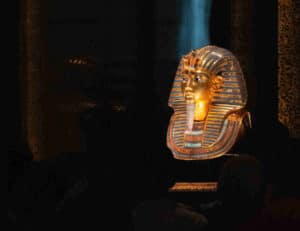For some people, the Ptolemaic period in Egypt is not as interesting as earlier periods, such as the Ancient Empire with its famous Pyramids or the New Empire with its spectacular tombs such as those in the Valley of the Kings. However, what not everyone knows is that some of the most fascinating ‘jewels’ of that civilization were built precisely in this period, and therefore could be considered a last period of splendor. In this post we show you some of the great works of Ptolemaic Egypt, which will surprise you.
What do we mean by Ptolemaic Egypt?
With this term we refer to the period from 323 BC to 30 BC, that is, between two great characters of Antiquity: Alexander the Great and Cleopatra. Cleopatra. With the death of the first (who had expanded his empire to this territory) begins a dynasty inaugurated by Ptolemy I Sóter, one of his generals, and with the death of the famous queen-pharaoh ends this lineage.
Because of its origins, the rulers of this dynasty gave a very Hellenistic character to Egypt, but to gain the favor of the population they also promoted great works in the style of the previous constructions, as we tell in this post. Many of these temples are in Upper Egypt and, therefore, can be visited when taking a cruise on the Nile.
Temple of Edfu
It is considered the second largest temple of Ancient Egypt, after Karnak, in Luxor. The work began in the time of Ptolemy III and lasted almost until the time of Cleopatra. It is dedicated to the gods Horus-Apollo, which accounts for the religious syncretism so particular of that period. It is one of the best preserved and highlights its imposing facade of pylons, as well as its hypostyle room, its hypostyle room and the room of the sacred boat.
Kom Ombo Temple
Its state of preservation is not as good as that of Edfu, but its view from the Nile is impressive. It was dedicated to the gods Sobek (crocodile) and Haroeris (a version of Horus). Although there was a sacred precinct here since the time of the New Empire, what we see today dates back to the time of Ptolemy VI. The columns of its double entrance stand out, as well as its rich reliefs and the innumerable references to the crocodile. In fact, next to the temple there is a museum about this sacred animal that populated the banks of the Nile.
Temple of Isis at Philae
Built on a previous one, probably from the XXVI dynasty, the present temple is in perfect harmony with its surroundings… although its original location was not this island of Aguilkia, but another that was flooded after the construction of the Aswan dam. It was transferred here stone by stone, keeping all its charm. It is dedicated to the goddess Isis, of life and resurrection, who was one of the most important female divinities in the last times of this civilization.
Serapeum of Alexandria
Alexandria can be considered, in itself, one of the great works of Ptolemaic Egypt, since it was founded by Alexander the Great and became the capital with this dynasty. It was also the city in which these rulers were best able to express their Hellenism, with great cultural constructions such as the Museion and the Library… Little original remains of that great city, although its vestiges evoke that glorious era. For example, the Serapeum, for the cult of Serapis, a syncretic Greek-Egyptian deity, chosen by Ptolemy I (the architect of this temple) as patron of the city. The column that stands on top, however, is later, from Roman times, in the time of Pompey.



